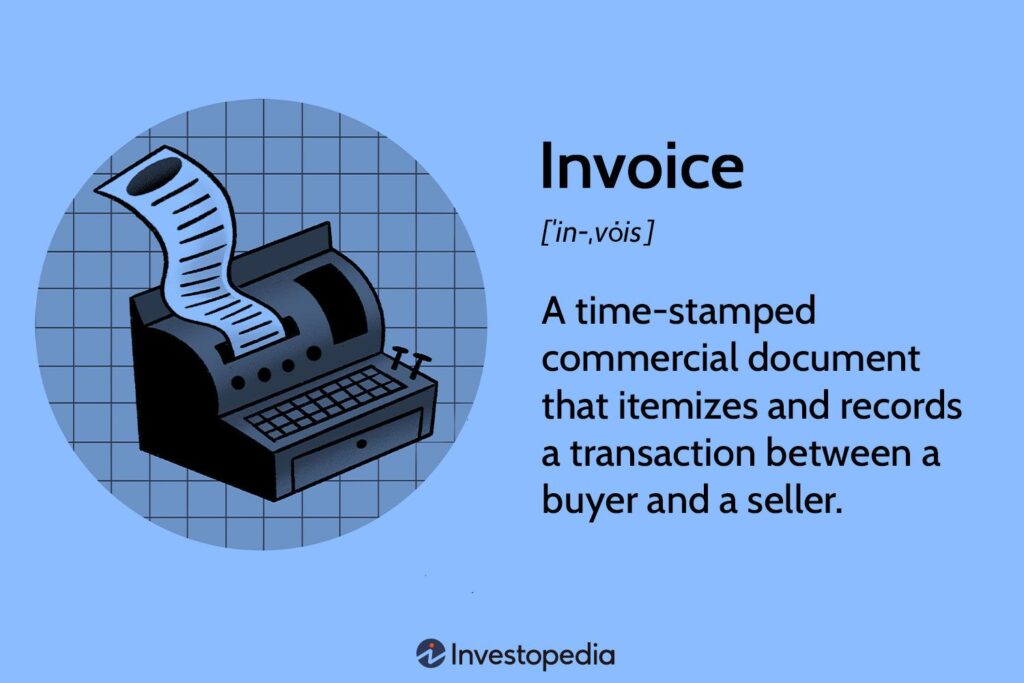What is an Invoice?
An invoice is a formal document issued by a seller to a buyer that outlines the details of a transaction. It serves as a request for payment and provides essential information regarding the goods or services provided, their costs, and the terms of payment. Invoices are vital for businesses, as they not only facilitate the collection of payments but also serve as legal documents for accounting and tax purposes.
Purpose of an Invoice
The primary purposes of an invoice include:
- Requesting Payment: An invoice serves as a formal request for payment from the buyer to the seller.
- Record Keeping: Invoices provide a detailed record of transactions, which is essential for accounting and financial management.
- Legal Protection: Invoices serve as legal documents that can be used in case of disputes regarding payments or services rendered.
- Tax Documentation: Invoices are important for tax purposes, as they provide proof of income and expenses for both buyers and sellers.
- Business Analysis: Invoices can help businesses analyze sales trends, customer behavior, and cash flow.
Key Components of an Invoice
An invoice typically includes the following key components:
- Header: The word “Invoice” is prominently displayed at the top of the document.
- Invoice Number: A unique identifier assigned to each invoice for tracking purposes.
- Date of Issue: The date when the invoice is created.
- Seller Information: The name, address, and contact information of the seller.
- Buyer Information: The name, address, and contact information of the buyer.
- Description of Goods/Services: A detailed list of the goods or services provided, including quantities and prices.
- Subtotal: The total cost of the goods or services before taxes and additional charges.
- Taxes: Any applicable taxes, such as sales tax, added to the subtotal.
- Total Amount Due: The final amount the buyer owes, including subtotal, taxes, and any additional fees.
- Payment Terms: Information regarding payment methods, due dates, and any late fees.
- Notes or Additional Information: Any additional information or notes relevant to the transaction.
Types of Invoices
There are several types of invoices, each serving a specific purpose:
- Standard Invoice: The most common type, used for general transactions.
- Pro Forma Invoice: A preliminary invoice sent before goods or services are delivered, outlining expected costs.
- Commercial Invoice: Used for international trade, detailing the goods being shipped and their value for customs purposes.
- Credit Invoice: Issued to provide a credit to the buyer, often used for returns or adjustments.
- Debit Invoice: Issued to request additional payment from the buyer, typically due to additional services or costs incurred.
- Recurring Invoice: Used for regular payments, such as subscriptions or memberships, sent at predetermined intervals.
How to Create an Invoice
Creating an invoice can be done using various methods, including manual templates, accounting software, or online invoicing tools. Here are the steps to create a basic invoice:
- Choose a Template: Select an invoice template that suits your business needs. Many accounting software programs offer customizable templates.
- Fill in Seller Information: Include your business name, address, and contact information.
- Add Buyer Information: Include the buyer’s name, address, and contact details.
- Assign an Invoice Number: Create a unique invoice number for tracking purposes.
- List Goods/Services: Provide a detailed description of the goods or services provided, including quantities and prices.
- Calculate Totals: Add up the subtotal, taxes, and any additional fees to determine the total amount due.
- Specify Payment Terms: Include payment methods, due dates, and any late fees.
- Review and Send: Double-check the invoice for accuracy and send it to the buyer via email or traditional mail.
Best Practices for Invoicing
To ensure timely payments and maintain good relationships with clients, consider the following best practices:
- Be Clear and Concise: Use clear language and formatting to make the invoice easy to read and understand.
- Send Invoices Promptly: Issue invoices as soon as goods or services are delivered to expedite payment.
- Follow Up on Unpaid Invoices: If payment is not received by the due date, send a polite reminder to the buyer.
- Keep Records: Maintain organized records of all invoices for accounting and tax purposes.
- Use Professional Language: Maintain a professional tone in your invoices to reflect your business’s credibility.
The Importance of Invoices in Business
Invoices play a crucial role in the financial health of a business. They help manage cash flow, track sales, and ensure that businesses receive payment for their products or services. Additionally, invoices provide valuable insights into customer behavior and sales trends, allowing businesses to make informed decisions.
Frequently Asked Questions
Q: What is the difference between an invoice and a receipt?
A: An invoice is a request for payment issued by the seller, while a receipt is a confirmation of payment received by the seller.
Q: How long should I keep invoices for tax purposes?
A: It is generally recommended to keep invoices for at least seven years for tax purposes, but this may vary depending on local regulations.
Q: Can I create invoices using accounting software?
A: Yes, many accounting software programs offer features to create, send, and track invoices easily.
Q: What should I do if a client disputes an invoice?
A: Address the dispute promptly by reviewing the invoice details and communicating with the client to resolve any issues.
Q: Are there legal requirements for invoices?
A: Legal requirements for invoices may vary by jurisdiction, but it is generally advisable to include specific information such as invoice numbers, dates, and seller/buyer details.
Conclusion
In conclusion, invoices are essential documents in the world of business, serving as formal requests for payment and providing a detailed record of transactions. Understanding how to create and manage invoices effectively is crucial for maintaining cash flow and ensuring the financial health of a business. By following best practices and utilizing appropriate tools, businesses can streamline their invoicing processes and foster positive relationships with clients.
| Feature | Description |
|---|---|
| Purpose | Request for payment, record keeping, legal documentation |
| Key Components | Invoice number, seller/buyer information, description of goods/services, totals, payment terms |
| Types of Invoices | Standard, pro forma, commercial, credit, debit, recurring |
| Best Practices | Clear communication, prompt sending, follow-up on unpaid invoices, maintain records |
For more detailed information about invoices, you can refer to the Wikipedia page on Invoices.



